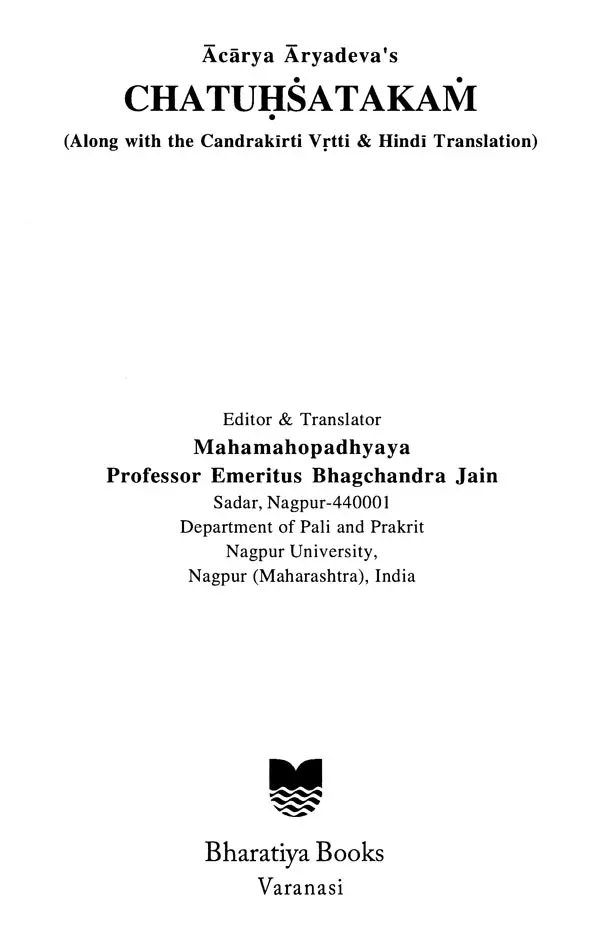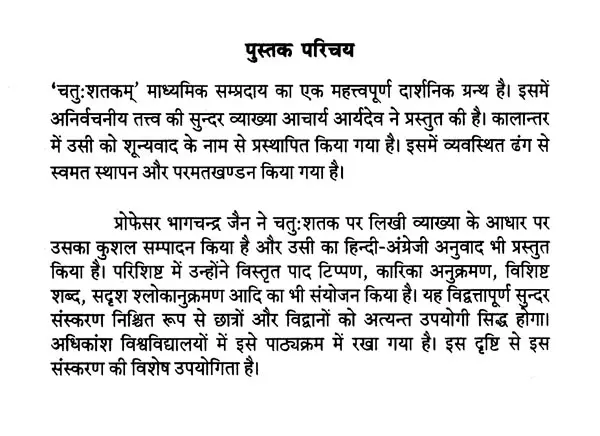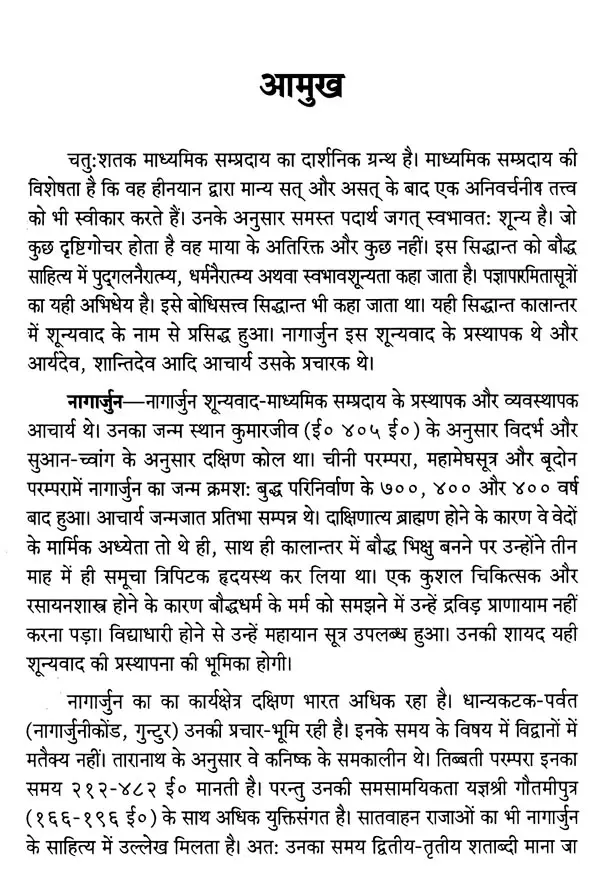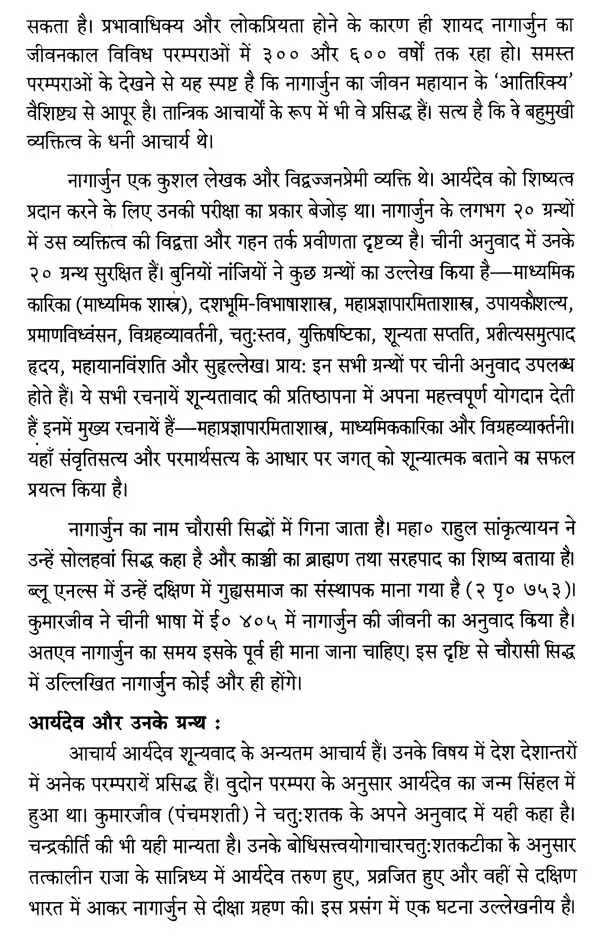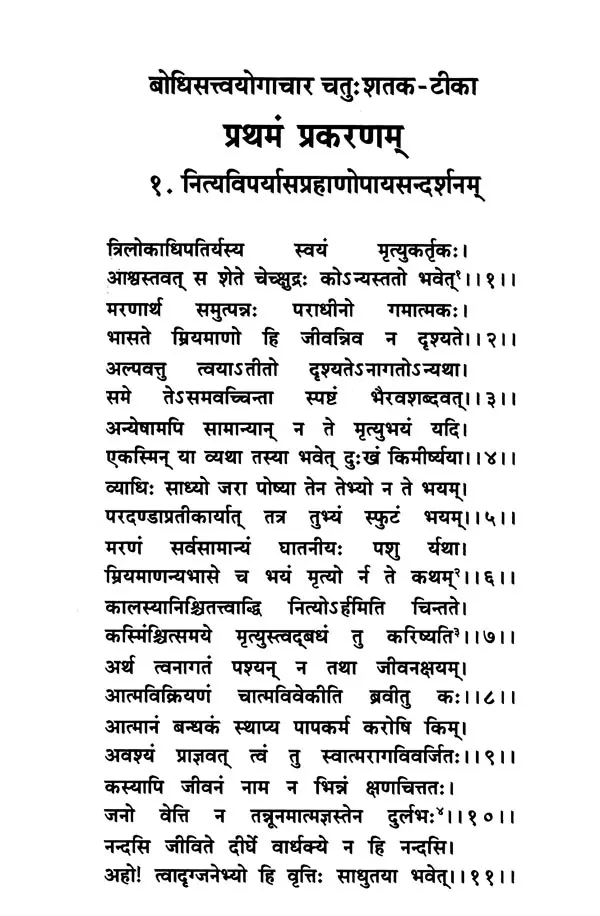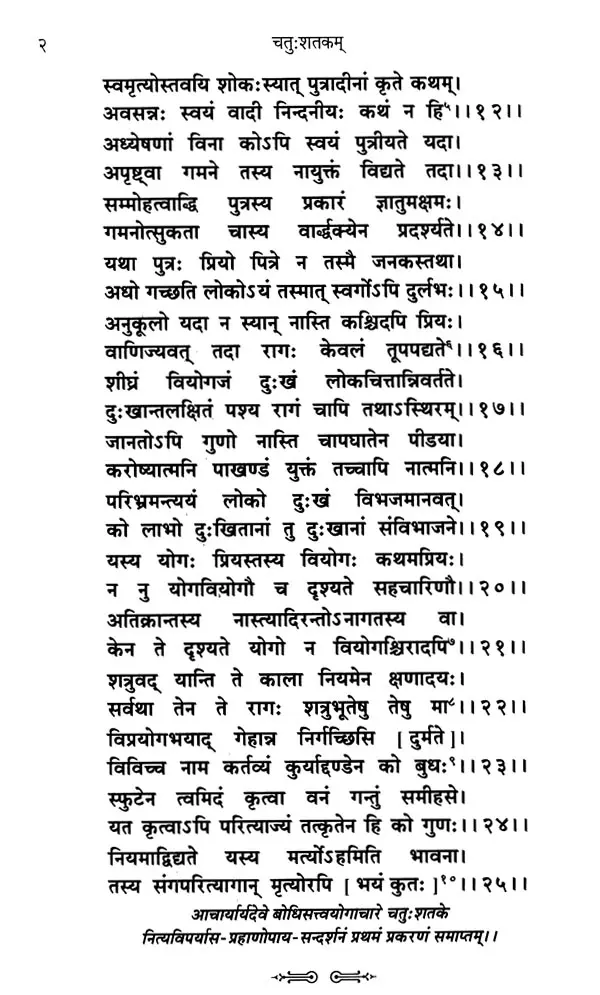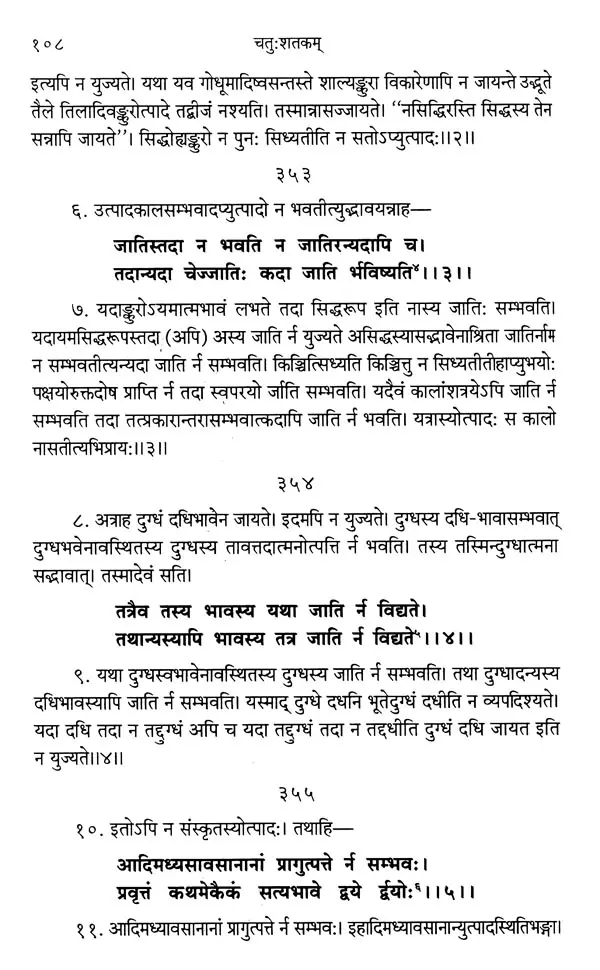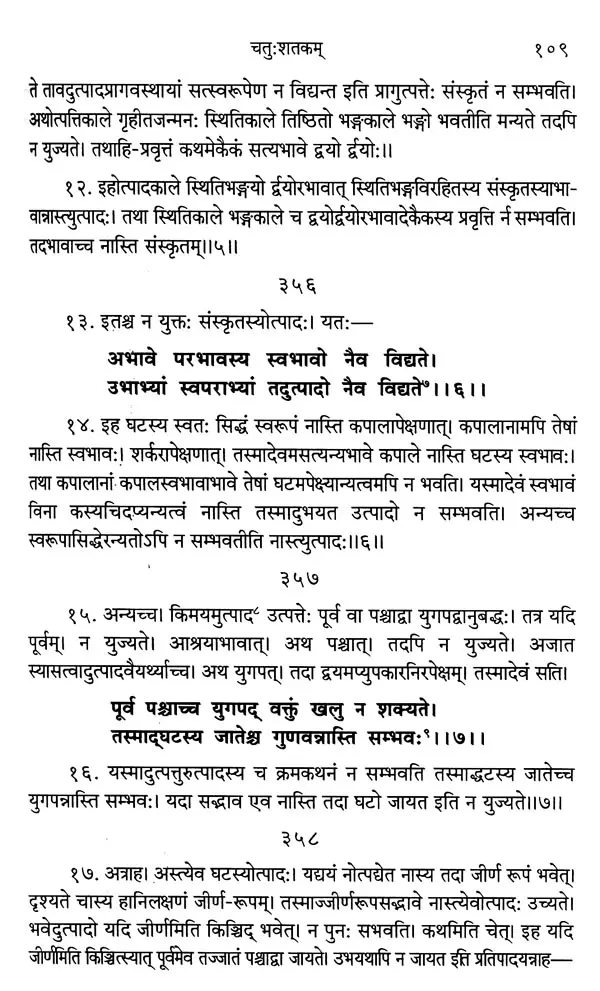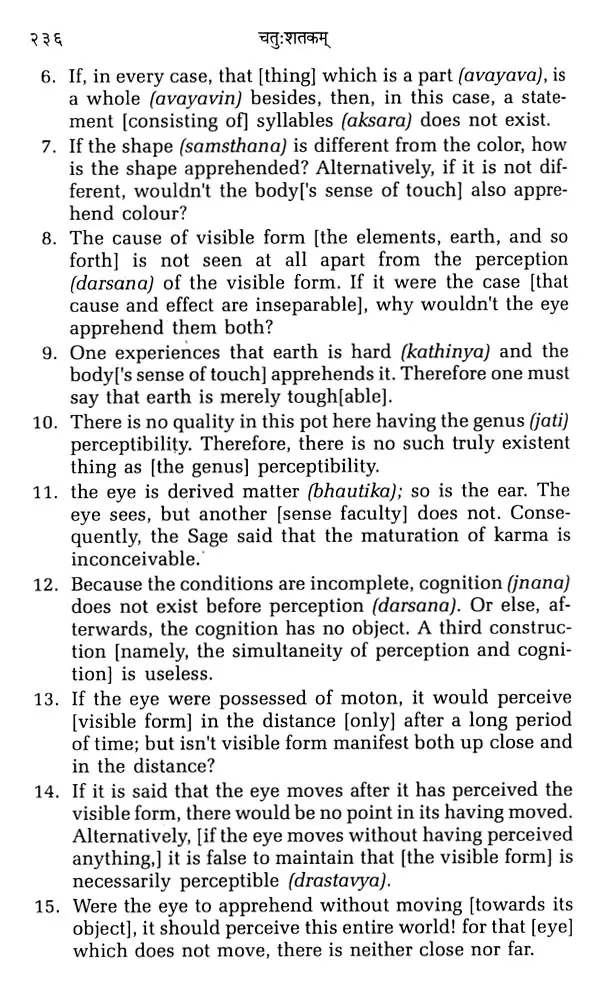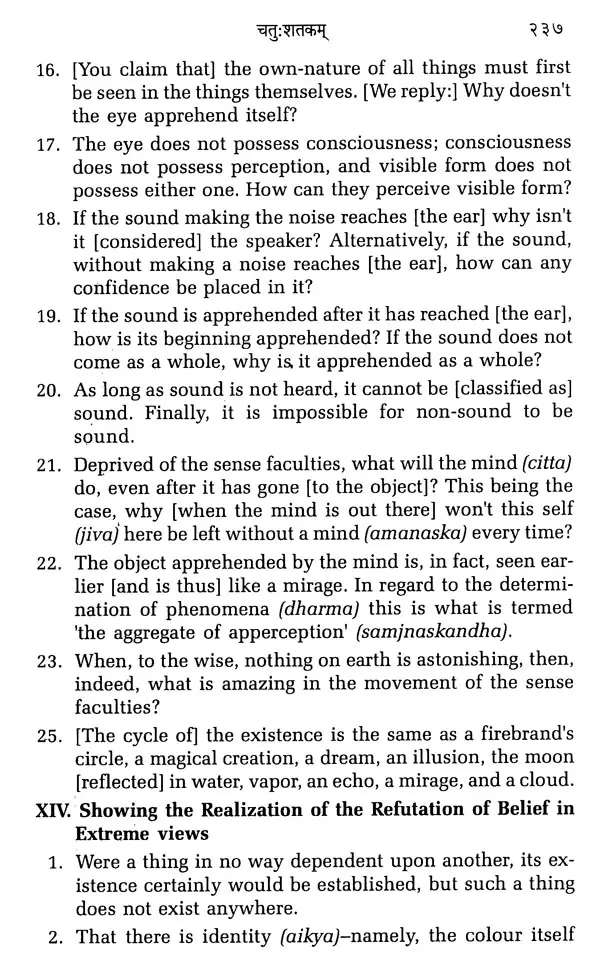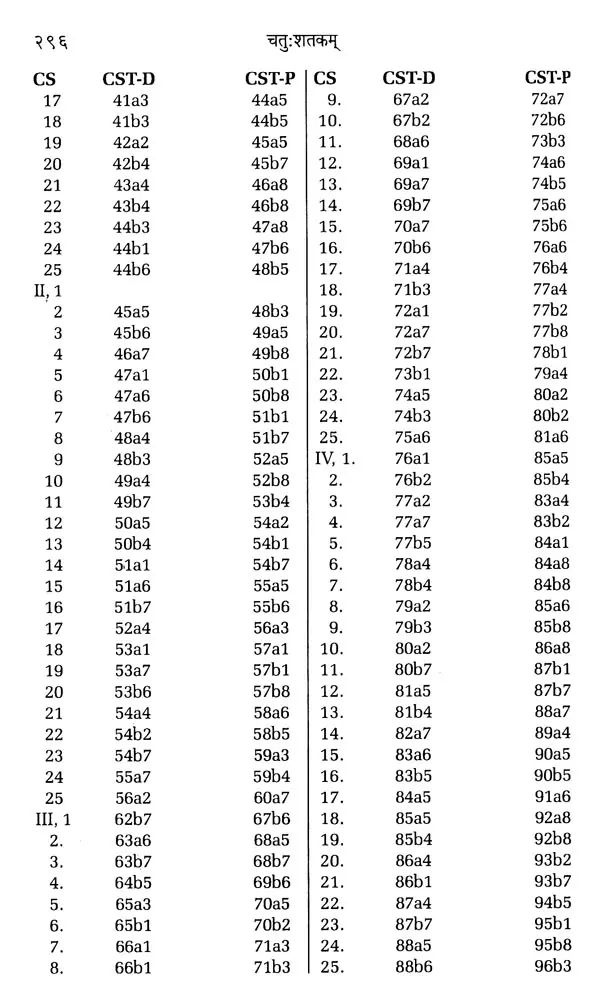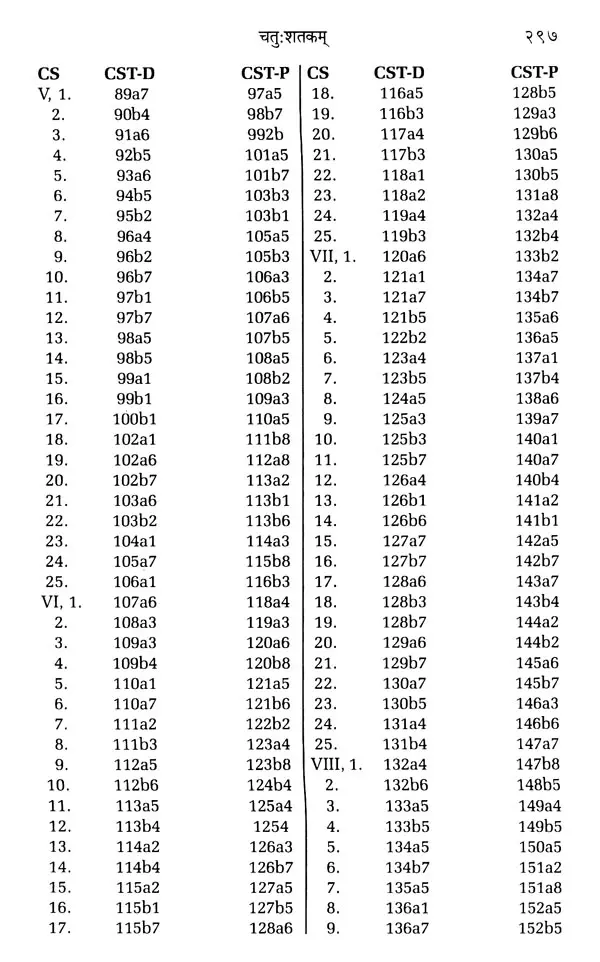
आचार्य-आर्यदेव-प्रणीतम् चतुःशतकम्- Acarya Aryadeva's Chatuhsatakam (Along with the Candrakirti Vrtti & Hindi Translation)
Book Specification
| Item Code: | UAJ546 |
| Author: | Bhagchandra Jain Bhaskar |
| Publisher: | Bharatiya Books, Varanasi |
| Language: | Sanskrit, Hindi and English |
| Edition: | 2022 |
| Pages: | 328 |
| Cover: | HARDCOVER |
| Other Details | 9.00 X 6.00 inch |
| Weight | 480 gm |
Book Description
This edition fell into my hands in 1915. During my two years' stay in , Europe, during 1921-23 I started learning Tibetan at the feet of the famous Buddhologist L. de la valley Pons sin, I came upon a Tibetan and Chinese translation of the work, and it was suggested to me that I should fill up the gaps in the work by rendering into Sanskrit from Tibetan the missing stanzas of the work. I started the work of recon- striation from chapter VIII till its completion in chapter XVI. Of the 225 stanzas of this portion, 95 stanzas were found in Maha. Dr. Hara Prasad Shastri' edition, some 13 more stanzas were traced as quotation in commentaries and I filled up the gap of 117 stanzas, making the total of 225 stanzas. My method was that I first prepared a Tibetan Sanskrit Glossary of 108 stanzas which were available in the original Sanskrit, and used this Tibetan Sanskrit glossary for reconstruction of the re- maining stanzas. When this work was ready, I added, by way of Introduction, all the information’s, known in those ways, on the history of the Madhyamika school, and presented the work as my Doctorate thesis to Paris University in 1923 in a printed form. My thesis was approved by the University, and I became Doctor de I ‘University' de Paris ala Faculty' de Letters. This thesis of mine, published in 1923, is now out of date as since then we have made tremendous progress in our information about Buddhism as well as Madhyamika school. The late Dr. Vidhu Shekhar Bhattacharya, with whom I was acquainted during my stay in Shanti Niketan, hailed my above-mentioned thesis as a very creditable achievement, but also said that my work was capable of improvement. Ho worked on my thesis as a draft for reconstruction and published his edition in 1931 of the same portion criticizing at places my reconstruction and suggesting improvement in it. Dr Bhagachandra Jain has now published this fourth edition of the Catuhsatakam adding Hindi & English translation and a big introduction in Hindi dealing with the History, Philosophy and Literature of the Buddhists, and I am sure the Catusataka, the work of Aryadeva, in the present form would attain greater popularity.
Kumarajiva's translation into Chinese in fifth century Chandrakirti's commentary on the Chatuhsatakam, the Bodhisattva Yogacara Catuhsatakatika (D.F. 31 b.p.f. 34b) Hsuan tsang's record of his pilgramage to India, the Ta Tang His Yu Chi. (S. Beal, Buddhist Records of the Western World, 11, London, 1884, pp. 209-212). The Sinhalese Chronicles, the Mahavamsa (xxxv, 29) and Dipavamsa (xxii, 41).
According to the earliest source Kumarajiva (fifth century AD.) is of view that Aryadeva was born in a Brahmana family in South India. He was Nagarjuna's disciple. He converted the hostile South Indian king, publicly debated with the Tirthankaras, defeating them in large numbers, and subsequently withdrew his disciples to the forest where he composed hundred treatise in twenty chapters (Sataka) and also the four hundred treatise : (Catuhsatakam). The disciples of the master murdered him whom he had conquered in philosophical debates.
Candrakirti in his commentary on the Catuhshatakam, the Bodhisattvayogacara-CatuQsatakatika says that Aryadeva (c. 200- 225 AD.) was born in the Island of Simhala as the king's son of the land. After having become the crown prince he renounced the world, came to the South, became the disciple of Nagarjuna and followed his doctrine:
Simhaladvipe jatah simhaladviparajaputrah ante yauvarajyam tyaktah tatraiva pravrajitah. Tato daksinam dism kramasah agatya Acaryanagarjunasya antevasitvamaptva tanmatanusari vabhuva.
, Sinhala chronicles support this view and place Aryadeva in Srilanka. During the latter half of the third century A.D. Accord- ingly, he left' the island at the time of Vetullavada heresy, the Mahayana, came to India and became the disciple of Madhyamika philosopher Nagarjuna. He then composed his works in the fourth century A.D. 'Hsuan tsang's records also support this view.
Book's Contents and Sample Pages
